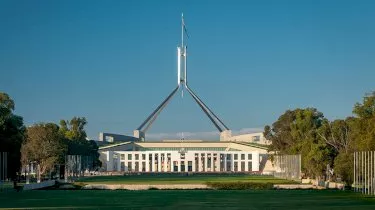Invest
Budget 2020 unveiled: The path out of the pandemic
Seven months overdue, the long-awaited federal budget has been delivered, setting out a much-anticipated plan for economic recovery post-COVID-19. Here’s what this might mean for you.
Budget 2020 unveiled: The path out of the pandemic
Seven months overdue, the long-awaited federal budget has been delivered, setting out a much-anticipated plan for economic recovery post-COVID-19. Here’s what this might mean for you.

“This budget is all about jobs,” proclaimed federal Treasurer Josh Frydenberg in the House of Representatives as he unveiled details of the 2020 federal budget.
“Tonight, we embark as a nation on the next stage of the journey.”
“There is no economic recovery without a jobs recovery. There is no budget recovery without a jobs recovery,” he said.
But such stimulus doesn’t come without a cost. The government is forecasting net debt will peak at $966 billion – or 44 per cent of gross domestic product (GDP) – by 2024.

Calling this debt “a heavy burden”, Mr Frydenberg said it is a necessary one – “to responsibly deal with the greatest challenge of our time”.
So, what does the budget have in store for everyday Australians?
Tax cuts and concessions
In a bid to kickstart the economy and increase consumer spending, the government said it will bring forward stage 2 of its Personal Income Tax Plan by two years.
From 1 July 2020 (backdated):
- The low-income tax offset will increase from $445 to $700,
- The top threshold of the 19 per cent tax bracket will increase from $37,000 to $45,000,
- The top threshold of the 32.5 per cent tax bracket will increase from $90,000 to $120,000.
Additional targeted support will also provide support to low- and middle-income Australians, who will receive a one-off additional benefit of up to $1,080.
More than 11 million Australians are expected to benefit from the tax cut, the Treasury has outlined, with more than 7 million individuals expected to receive $2,000 or more in tax relief for the 2020-21 income year, compared with previous years.
Pensioner payments
This budget includes two additional $250 payments for Australia’s pensioners. The first will be provided from December 2020, while the second will become available in early 2021.
Reforms to super
“The Morrison government is reforming the superannuation system so that it works harder for Australians,” it was reported.
“Too many Australians are paying too much in super fees,” Mr Frydenberg said, with superannuation fees costing Australians $30 billion per year – more than energy bills ($27 billion) and water bills ($12 billion).
According to the Treasurer, new measures will benefit Australians by $17.9 billion over the next 10 years, which, left unchecked, could see Australians paying $45 billion in superannuation fees by 2034.
From 1 July 2021, the Your Future, Your Super package will work to prevent the creation of unintended multiple superannuation accounts, make it easier to choose a better fund, hold funds to account for underperformance, and improve transparency and accountability.
Job creation
The Treasury has allocated $98 billion towards job creation: $25 billion in direct COVID-19 response measures and $74 billion in new measures to aid in creation.
“Under our plan, the economy is forecast to grow by 4-and-a-half per cent next calendar year and unemployment is expected to fall to 6-and-a-half per cent by the June quarter 2022,” Mr Frydenberg stated.
This will see almost half a million young Australians supported through a new JobMaker hiring credit and investment in skills and training.
At a cost of $4 billion, the JobMaker hiring credit will be payable for up to 12 months for each new job created by Australian businesses – and is available for any employer who hires eligible employees between the ages of 16 and 35.
The hiring credit will be paid quarterly in arrears at the rate of $200 per week for those aged between 16-29, and $100 per week for those aged between 30-35, with eligible employees required to work a minimum of 20 hours per week.
Skills and training for young people
A $1 billion JobTrainer Fund will create up to 340,000 free or low-cost training places for school leavers and jobseekers.
In addition, $1.2 billion will be used to create 100,000 new apprenticeship and traineeship positions – with a 50 per cent wage subsidy for businesses who employ them.
A further 50,000 new higher education short courses and 12,000 Commonwealth supported places for higher education will also be added in 2021.
More to come.
About the author

About the author


Economy
Australian inflation continues downward trend, nearing RBA target
The Australian Bureau of Statistics (ABS) has reported that the Consumer Price Index (CPI) rose 2.7 per cent in the year to August, down from 3.5 per cent in July and 3.8 per cent in June. Read more

Economy
UK markets poised for gains after election, global geopolitical risks remain
Chris Iggo, Chief Investment Officer at AXA Investment Managers, has provided an optimistic outlook for UK markets following the recent general election, while cautioning about ongoing global ...Read more

Economy
Co-ops and mutuals boost revenue to $43.2 billion despite economic challenges
Australia's top 100 co-operative and mutual businesses have posted a record performance in the 2023 financial year, growing total revenue by 16.1 percent to $43.2 billion. Read more

Economy
Fed decision set to pressure emerging market central banks to hike rates
The Federal Reserve's expected decision to maintain US interest rates at a two-decade high at its sixth consecutive meeting on Wednesday is set to put pressure on emerging market central banks to hike ...Read more

Economy
Fed keeps rates steady, signals higher for longer amid elevated inflation
The Federal Reserve kept interest rates unchanged at its May meeting and signaled that rates are likely to stay higher for longer given elevated inflation in the first quarter, while also announcing a ...Read more

Economy
CPI data another piece in RBA's interest rate decision puzzle, says REIA
The latest Consumer Price Index (CPI) data from the Australian Bureau of Statistics (ABS) shows that inflation rose 3.4% in the 12 months to February 2024, unchanged from the previous two months, ...Read more

Economy
Including passive job seekers in unemployment measure doesn't impact economic cycle view, study finds
New research from e61 Institute has found that while current unemployment measures may not capture all job seekers, broader definitions that include passive job searchers do not provide better ...Read more

Economy
Survey reveals heightened job security concerns among IT workers in 2024
A recent survey conducted by Authority Hacker has revealed that 89.66% of IT workers in the United States have increased concerns about job loss in 2024. Read more

Economy
Australian inflation continues downward trend, nearing RBA target
The Australian Bureau of Statistics (ABS) has reported that the Consumer Price Index (CPI) rose 2.7 per cent in the year to August, down from 3.5 per cent in July and 3.8 per cent in June. Read more

Economy
UK markets poised for gains after election, global geopolitical risks remain
Chris Iggo, Chief Investment Officer at AXA Investment Managers, has provided an optimistic outlook for UK markets following the recent general election, while cautioning about ongoing global ...Read more

Economy
Co-ops and mutuals boost revenue to $43.2 billion despite economic challenges
Australia's top 100 co-operative and mutual businesses have posted a record performance in the 2023 financial year, growing total revenue by 16.1 percent to $43.2 billion. Read more

Economy
Fed decision set to pressure emerging market central banks to hike rates
The Federal Reserve's expected decision to maintain US interest rates at a two-decade high at its sixth consecutive meeting on Wednesday is set to put pressure on emerging market central banks to hike ...Read more

Economy
Fed keeps rates steady, signals higher for longer amid elevated inflation
The Federal Reserve kept interest rates unchanged at its May meeting and signaled that rates are likely to stay higher for longer given elevated inflation in the first quarter, while also announcing a ...Read more

Economy
CPI data another piece in RBA's interest rate decision puzzle, says REIA
The latest Consumer Price Index (CPI) data from the Australian Bureau of Statistics (ABS) shows that inflation rose 3.4% in the 12 months to February 2024, unchanged from the previous two months, ...Read more

Economy
Including passive job seekers in unemployment measure doesn't impact economic cycle view, study finds
New research from e61 Institute has found that while current unemployment measures may not capture all job seekers, broader definitions that include passive job searchers do not provide better ...Read more

Economy
Survey reveals heightened job security concerns among IT workers in 2024
A recent survey conducted by Authority Hacker has revealed that 89.66% of IT workers in the United States have increased concerns about job loss in 2024. Read more








